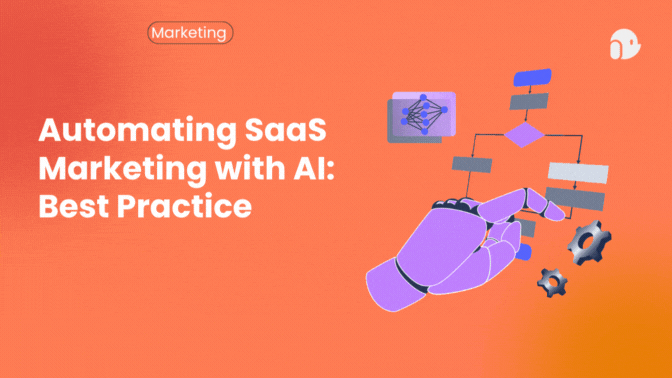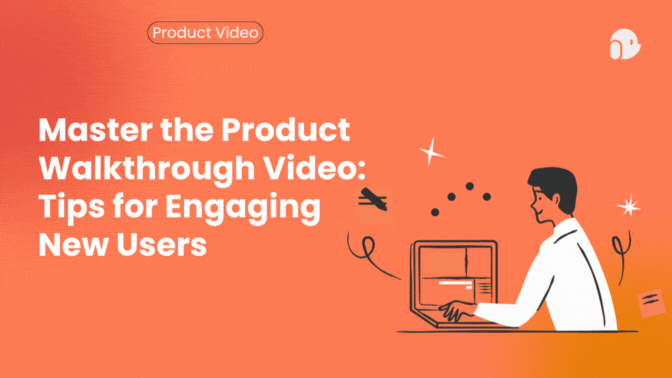How AI is Transforming Marketing in the SaaS Industry

Remember when lead scoring felt like educated guesswork and promotional emails were a one-size-fits-all affair? Those days are fading fast. AI has quietly moved from a niche experiment into the operational center of many high-growth SaaS teams. It doesn’t just automate tasks; it makes smarter decisions, personalizes at scale, and speeds up the entire revenue machine. In short: if you’re not thinking about AI as a core part of your marketing strategy, you’re already late to the party.
Why SaaS and AI are a natural fit
SaaS companies live on data. Every product interaction, trial activation, helpdesk ticket, and billing event produces signals that AI can learn from. That constant stream of first-party data is the fuel for predictive models, personalized content, and autonomous workflows.
Let’s be honest: SaaS marketing is all about maximizing Customer Lifetime Value (CLV) while keeping Customer Acquisition Cost (CAC) manageable. AI helps on both fronts. It spots high-potential customers earlier and keeps existing users engaged longer. That’s not just efficiency; it’s a strategic advantage.
For a deeper dive into using AI to elevate your marketing demos, check out How to Leverage AI Product Demos Effectively in Your Marketing Strategy. It explores how personalized demo experiences can boost conversion rates and sales performance.
The three AI pillars changing the game
AI isn’t a single tool. It’s a trio of capabilities that, when combined, deliver outsized results.
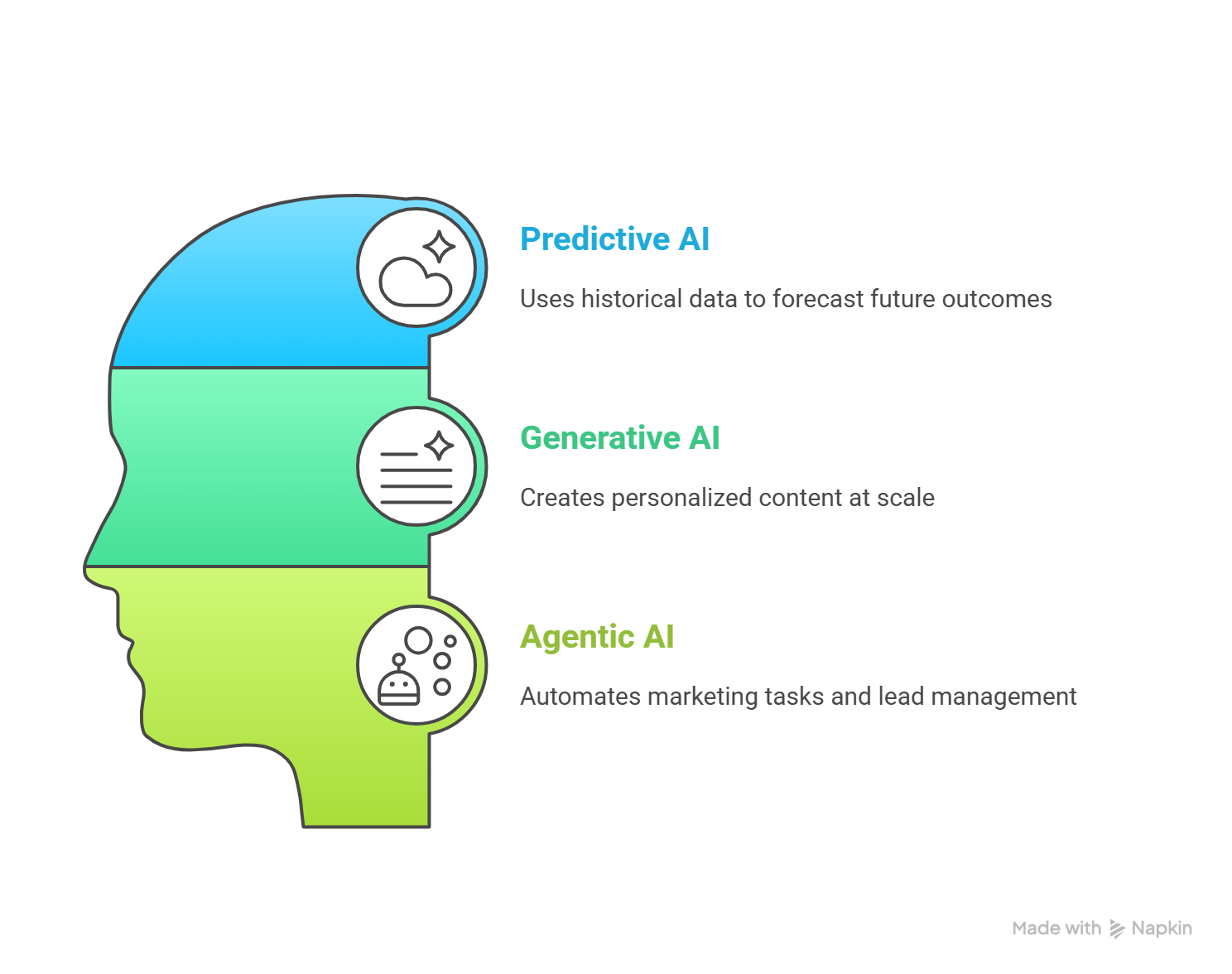
Predictive AI: the foresight engine
Predictive models turn historical behavior into future signals. Which trial users will convert? Who’s at risk of churn? Which leads are actually worth the seller’s time?
Practical takeaway: integrate predictive lead scoring with your CRM so sales spend time where it matters. It’s like giving your team a heat map of opportunity.
Generative AI: personalization at scale
Generative models create content, emails, landing copy, summaries, and even tailored onboarding scripts; fast. The big win is economic: personalization used to be expensive and slow; GenAI makes it cheap and repeatable.
Practical takeaway: use GenAI to draft variations, then human-edit for brand voice. You get scale without sounding robotic.
To discover the tools empowering marketers to personalize and optimize faster, explore the Top 10 AI Marketing Tools Every Digital Strategist Needs. It’s a practical guide to the most impactful AI-driven marketing tools available right now.
Agentic AI: autonomous marketing execution
Agentic systems (AI agents) do the work: build the campaign, create content, run experiments, optimize in real time, and hand off qualified leads to humans. Think of them as digital SDRs and campaign managers rolled into one.
Practical takeaway: start by automating repetitive, high-volume tasks, e.g., early-stage lead nurturing, and measure the time saved.
How AI helps across the funnel (AARRR)
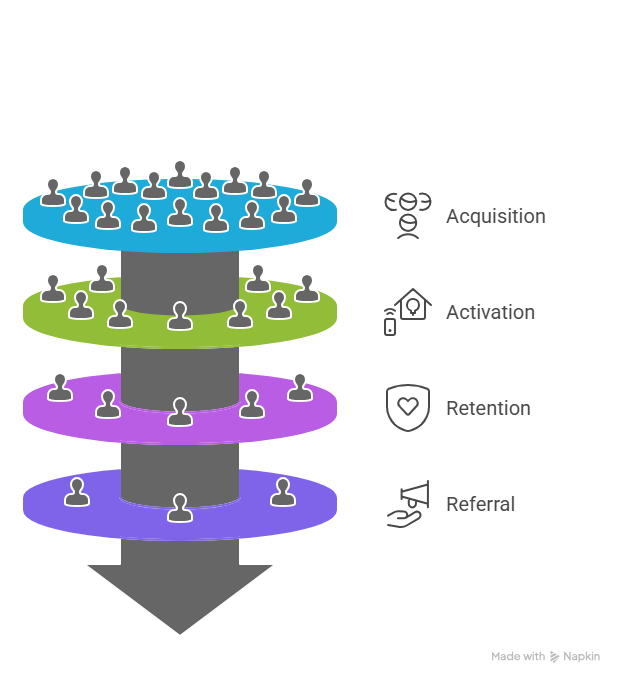
Acquisition: Predictive lead scoring and autonomous outreach increase the quantity of qualified inbound conversations. No more casting a wide net and hoping.
Activation/Conversion: Dynamic pricing, AI-enabled sales briefs, and real-time contextual nudges turn trials into paying users faster.
Retention/Revenue: Churn prediction and personalized interventions keep customers longer and uncover expansion opportunities.
Referral: Satisfied users served relevant, timely campaigns are more likely to become advocates, and AI helps nudge them at the right moment.
ROI, velocity, and the data backbone
AI’s value is measurable: better lead quality, faster sales cycles, and higher campaign ROI. Companies report meaningful uplifts in lead conversion and substantial reductions in time-to-revenue when predictive models and agentic automation are properly wired to unified data.
But here’s the catch: AI is only as good as your data architecture. A unified customer data platform (CDP), clean event tracking, and MLOps discipline are non-negotiable. Without that foundation, models underperform, and Generative outputs risk producing meaningless or inaccurate content.
Real risks and how to manage them
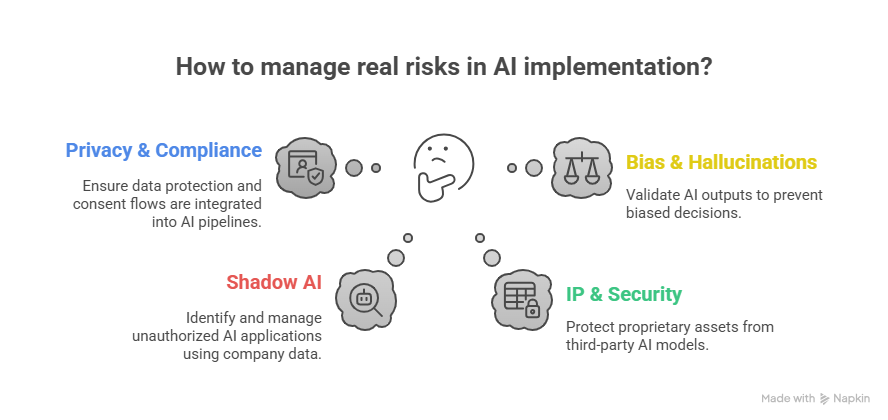
Using AI well means using it responsibly. A few guardrails to keep handy:
- Privacy & compliance: Ensure consent flows and data protections (GDPR, CCPA) are baked into your pipelines.
- Shadow AI: Discover which SaaS apps may be training models on your data unknowingly.
- IP & security: Protect proprietary assets; be cautious about what you expose to third-party models.
- Bias & hallucinations: Always validate AI-driven decisions and outputs, especially when personalization leads to pricing or offer changes.
Human oversight isn’t optional; it’s essential.
Looking ahead: from personalization to autonomous marketing
The next wave is autonomous marketing: AI agents designing, executing, and optimizing entire campaigns against high-level objectives. Sounds futuristic? It’s already happening in pockets. The companies that win will combine a strong data foundation, clear governance, and continuous measurement.
If you like thought experiments, imagine setting a target ROAS, and an AI system running multi-channel tests, versioning creatives, and reallocating spend in real time to hit that target. That’s not science fiction. It’s the trajectory we’re on.
Conclusion: Embrace AI, but do it thoughtfully
AI transforms marketing in SaaS by increasing speed, relevance, and scale. But technology alone doesn’t guarantee success. The real winners will be teams that pair machine intelligence with human judgment, invest in clean data pipelines, and treat governance as a strategic priority.
Ready to see AI-driven personalization in action? Try Puppydog.io to create AI-assisted product demos and hyper-personalized demo experiences from screen recordings and screenshots. Book a demo, or create your first personalized demo in minutes and show prospects the product they’ll actually use.
FAQs
Q: Will AI replace SaaS marketers and salespeople?
A: No. AI automates repetitive tasks and surfaces insights. But human creativity, relationship-building, and ethical judgment remain indispensable.
Q: How much does it cost to start using AI in marketing?
A: Costs vary. Many tools and APIs offer tiered pricing. Start with small, high-impact pilots (lead scoring, email personalization) and scale as you prove ROI.
Q: What’s the first technical step for a SaaS company wanting to adopt AI?
A: Audit and unify your first-party data. If your customer events, CRM records, and product usage data live in separate silos, fix that first.
Q: How can we avoid AI hallucinations and bias?
A: Implement human-in-the-loop checks, maintain diverse training data, and use guardrails and validation tests for model outputs.
Q: Which AI capability should SaaS teams adopt first?
A: Predictive lead scoring or churn prediction often delivers fast, measurable wins. They directly impact CAC and CLV, the two most important levers for SaaS growth.
Further Reading
Here are some insightful reads to help you explore how AI continues to shape SaaS marketing, from strategy and data to execution and automation:
1. Upgrading Software Business Models to Thrive in the AI Era: McKinsey & Company offers a deep dive into how AI is reshaping SaaS business models, pricing, and customer engagement.
2. Will Agentic AI Disrupt SaaS? : Bain explores how generative and agentic AI technologies are transforming SaaS workflows and competitive landscapes.
3. Beyond AI Assistants: How AI Is Being More Deeply Embedded in Marketing and Martech Stacks: Scott Brinker from chiefmartec.com discusses how AI is moving from standalone tools to fully integrated systems across marketing operations.




